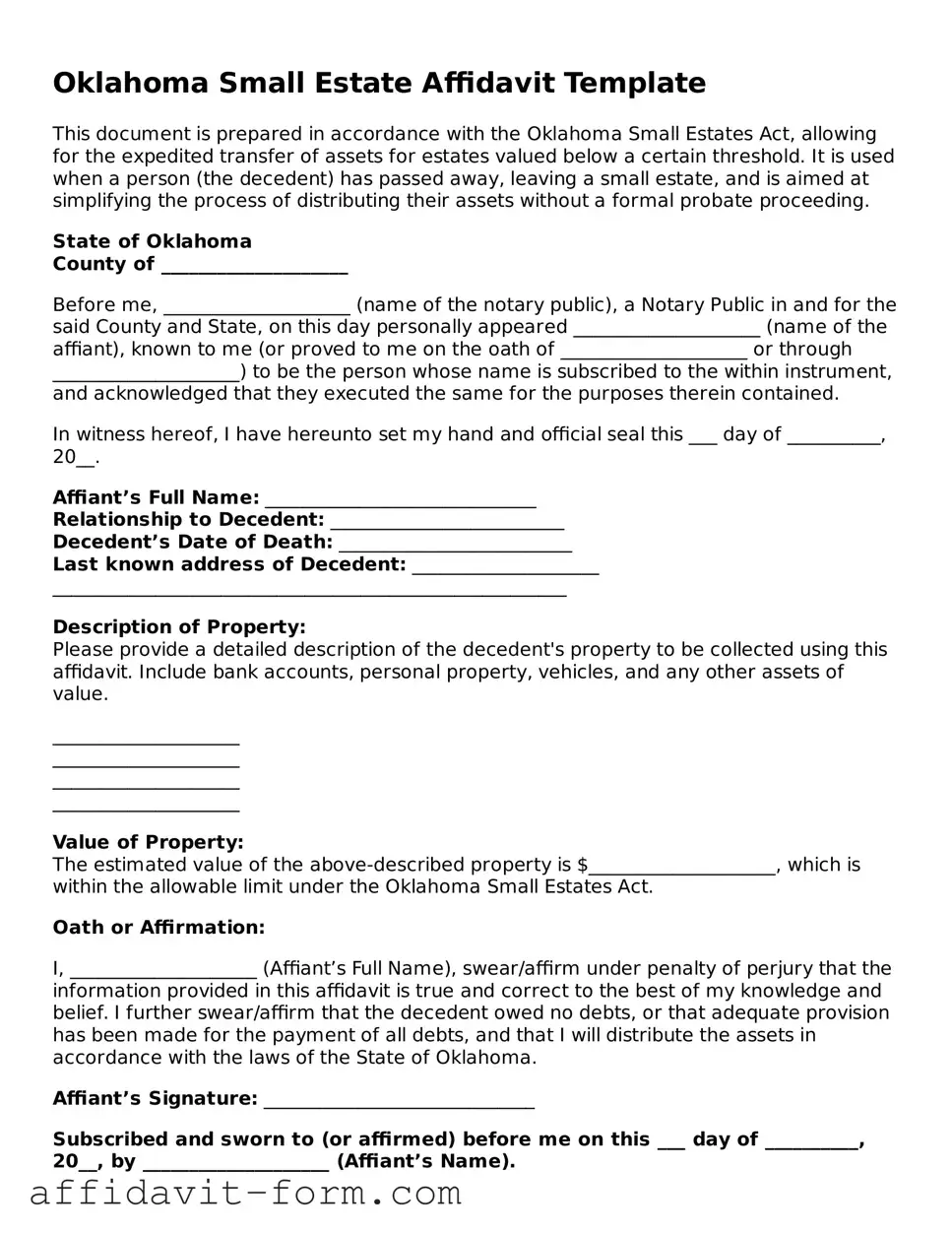Oklahoma Small Estate Affidavit Template
This document is prepared in accordance with the Oklahoma Small Estates Act, allowing for the expedited transfer of assets for estates valued below a certain threshold. It is used when a person (the decedent) has passed away, leaving a small estate, and is aimed at simplifying the process of distributing their assets without a formal probate proceeding.
State of Oklahoma
County of ____________________
Before me, ____________________ (name of the notary public), a Notary Public in and for the said County and State, on this day personally appeared ____________________ (name of the affiant), known to me (or proved to me on the oath of ____________________ or through ____________________) to be the person whose name is subscribed to the within instrument, and acknowledged that they executed the same for the purposes therein contained.
In witness hereof, I have hereunto set my hand and official seal this ___ day of __________, 20__.
Affiant’s Full Name: _____________________________
Relationship to Decedent: _________________________
Decedent’s Date of Death: _________________________
Last known address of Decedent: ____________________
_______________________________________________________
Description of Property:
Please provide a detailed description of the decedent's property to be collected using this affidavit. Include bank accounts, personal property, vehicles, and any other assets of value.
____________________
____________________
____________________
____________________
Value of Property:
The estimated value of the above-described property is $____________________, which is within the allowable limit under the Oklahoma Small Estates Act.
Oath or Affirmation:
I, ____________________ (Affiant’s Full Name), swear/affirm under penalty of perjury that the information provided in this affidavit is true and correct to the best of my knowledge and belief. I further swear/affirm that the decedent owed no debts, or that adequate provision has been made for the payment of all debts, and that I will distribute the assets in accordance with the laws of the State of Oklahoma.
Affiant’s Signature: _____________________________
Subscribed and sworn to (or affirmed) before me on this ___ day of __________, 20__, by ____________________ (Affiant’s Name).
Notary Public’s Signature: _____________________________
My commission expires: _______________________________
Instructions:
- Complete all blank lines on the affidavit with the appropriate information.
Access Oklahoma statutes for reference regarding the Oklahoma Small Estates Act.
- Gather and attach proof of the decedent’s death (death certificate) and any other required documents.
- The affidavit must be notarized before it can be used to collect the property.
- Present the completed and notarized affidavit to the entity or entities holding the property.
Note: It is recommended to consult with a legal professional if you have any questions or require assistance with this process.
